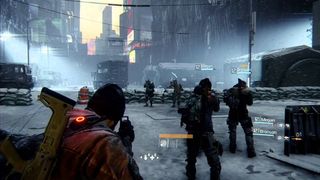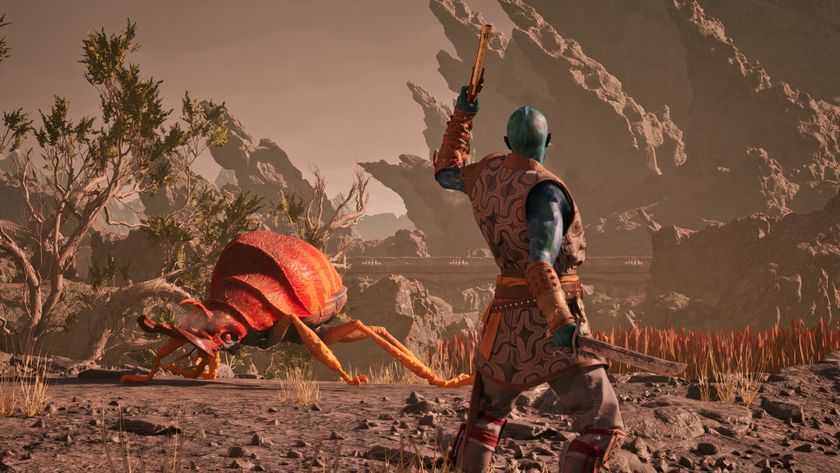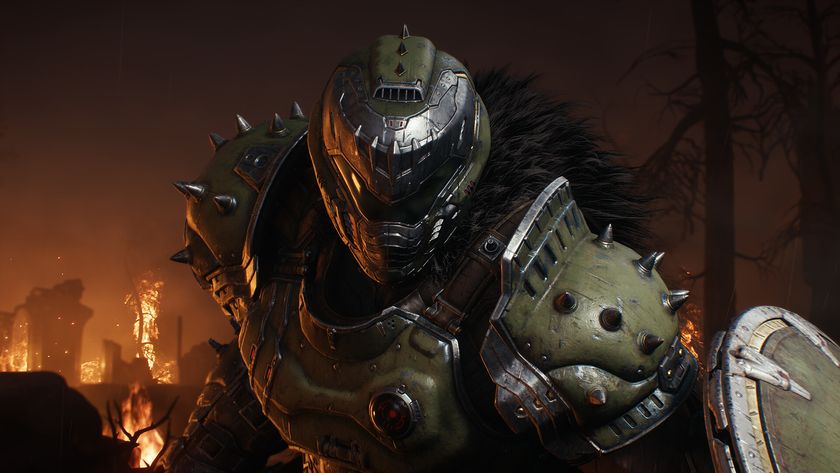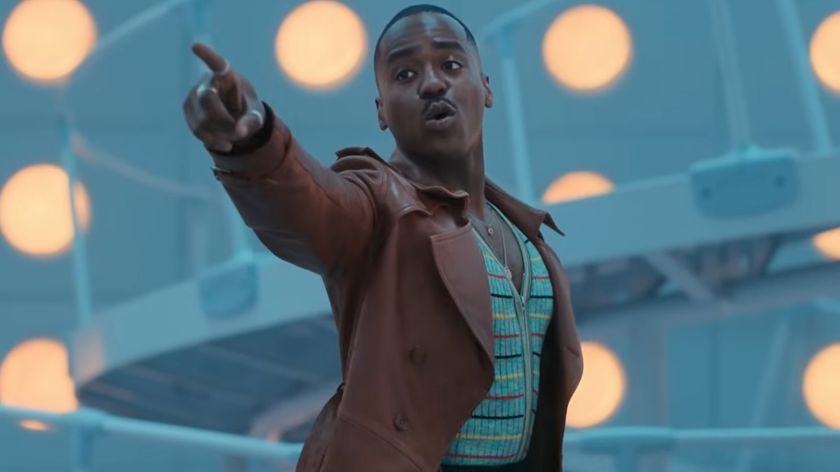The Division is too real for comfort but still not real enough
The Division didn’t make me pause until I got outside of Madison Square Garden. I fought my way through the weird Reverse Tardis version of the famous arena with its diminutive stands, shooting bandana-wearing thugs with typical video game abandon, but when I went outside, there was Monell’s. In the game, it’s just a bright red sign, an innocuous piece of set dressing. To a native New Yorker like me, though, it’s lit, colored and hung almost exactly like the Modell’s Sporting Goods store just one avenue over in the real city. That sign powerfully reflected my New York, the real New York, ramping up the plausibility of The Division’s apocalyptic milieu to a discomfiting degree. Realism pushed me out of The Division, making its action alternately uncomfortable and in some cases ghoulish. The Division is still fun to play, but its realism becomes a distracting hurdle when it comes into conflict with the central hook of leveling, finding loot, and fighting stronger enemies.
Let’s get the ghoulish part out of the way. All Tom Clancy games have a troubling relationship with violence. The last time I played through a Clancy campaign was Ghost Recon: Future Soldier, a game whose second mission gives you the voyeuristic choice of stabbing or shooting a man as he attempts to rape a woman. The Division doesn’t trade in justified murder fantasies quite so ugly, but its scenarios are still distressing in as plausible a world as it renders. After finding the very first training base and becoming activated as a member of the titular clandestine secret military agency, you get your first set of missions, one of which includes securing food from some looters.
Forget the terrifying fact that there’s suddenly a secret military with no oversight or rules who apparently have so little training that they have to constantly level up after combat. Retaking the food is troubling enough on its own. The looters who’ve stolen it are just regular hungry people standing around a parking lot. Armed people yes, people who have also apparently taken this food by force from unarmed people. Yet the fight isn’t even fair. The guards likely won’t even see you—unless you’re an foolhardily aggressive player who doesn’t care about cover—before you shoot them down. Their buddies come running, all wearing similarly generic hoodies and winter coats straight out of Old Navy, but ultimately you’re the one that started the fight. It becomes clear later that most enemies you face are sociopaths with flame throwers or members of a rogue military group, but these early fights against simple rioters feel eerily wrong.
It would be one thing if The Division did more to define itself as a fantasy, to distance itself from the realism of its scenario and presentation. Games have been doing this pretty handily for decades. Streets of Rage 2 might be a quarter century older than The Division but it’s not wholly dissimilar. Both games find city centers overrun by gangs of armed thugs, and both see a secret, government-sanctioned, militarized force taking them out. But in Streets of Rage 2 you play as a blonde guy in a tank top, another guy on rollerblades, and a woman in a pleather miniskirt with fire coming out of her hands while she punches five people sporting the same neon mohawk. It’s ridiculous, it’s wrought in absurd colors and distorts perspective. The Division’s violence, like its Monell’s sign, evokes real world violence too vividly for comfort.

That isn’t to say that The Division doesn’t do some work to distance itself from the reality of violence. Rather than make the game’s fantasy more palatable, though, the concessions it makes to feel like a role-playing game only make it more difficult to settle into its realistic world. The further you plumb into Manhattan, getting a feel for the city and its underbelly of tunnels, the more loot you collect. Every piece of clothing proffered by a grateful civilian or customizable gun you find is wrought in painstaking detail. Red Storm Entertainment, one of the multiple studios that made the game alongside Massive at Ubi, specializes particularly in making game weapons as authentic as possible. It even consults directly with American arms manufacturers to make sure the guns in Tom Clancy and other Ubisoft games look, sound, and act just like the real thing.
Only they don’t act like the real thing. When you shoot an unsuspecting rioter in the head with a souped up ACR and he drops to the ground, The Division’s world still feels consistent; that’s what happens when people are shot. When that rioter’s football helmet-wearing leader comes out and soaks up bullets like a soggy black hole without going down, the world feels jarring and weird. It’s moments like these that the game’s direct competition, Destiny, looms large.
No Guardian in Destiny moves like a human being, no weapon feels like something made on Earth. When you shoot that upgraded Sleeper Simulant directly into Krughor’s face in the Court of Oryx, of course it takes a million shots to bring him down. Krughor is an imaginary monster and the Sleeper Simulant is an imaginary gun. There is no Court of Oryx. These things can behave however the hell they like, and the fun feeling of the action won’t conflict with the fiction of the world. Firing that ACR, a gun you yourself could build and hurt someone with, into the chest of a flamethrower-wielding maniac in front of the sporting goods store just like the one down the street requires a very specific feel not to cause dissociation from the game.
Sign up to the 12DOVE Newsletter
Weekly digests, tales from the communities you love, and more
There is also a place and an audience for its particular war fantasy. “Games remain a fantasy that I will never experience,” Terry Spier, lead game designer on The Division, told me during our conversation about the game. “I will never, well I hope I never, have to pick up an ACR and shoot a person who’s coming at me with a bat. But I sure like to do that in a fantasy world because I’ll never do it. It’s about the fantasy of living something I never will do, nor do I want to… I rely on this as an outlet to make it as real as possible. There’s a part of me that says that’s cool.”
He’s not wrong. The Division is at times very fun and its apocalyptic scenario feels cool, but it would be more enjoyable if it didn’t spend so much time and effort investing in realism. By making exhaustingly detailed real weapons cause mathematically determined damage in a place meant to authentically recall New York City during an extreme-but-possible warfare scenario, something feels misaligned in The Division.

Avowed is nothing like Bethesda's RPGs, but The Elder Scrolls 6 should take inspiration from its combat

Doom: The Dark Ages developers go back to the OG 1993 FPS for inspiration: "Every time you look at it, you learn something new"

Doctor Who season 2 release date appears to have been announced via an online advert - and it’s sooner than expected
Most Popular




